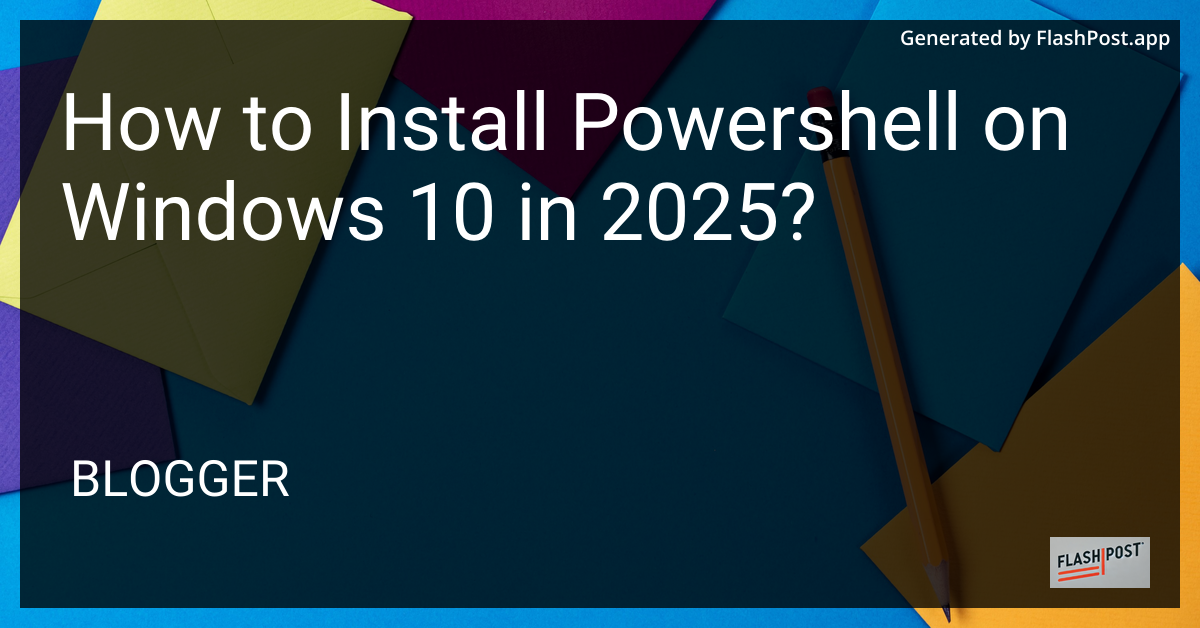How to Install Powershell on Windows 10 in 2025?

How to Install PowerShell on Windows 10 in 2025
PowerShell is a versatile automation tool and scripting language from Microsoft that allows users to automate tasks and manage systems. Given its powerful capabilities, both beginners and advanced users find value in utilizing PowerShell for a variety of tasks, from detecting duplicate files to managing containers and converting JSON data structures. If you’re looking to install or update PowerShell on your Windows 10 system in 2025, this guide will walk you through the steps to ensure a successful installation.
Why Install PowerShell?
PowerShell is more than just a command-line interface; it’s a comprehensive scripting environment that can perform advanced administrative tasks. Some practical uses include:
- Automating administrative tasks.
- Managing Windows and Linux environments.
- Restarting container instances.
- Converting JSON data into arrays for easier data manipulation.
Step-by-Step Guide to Installing PowerShell on Windows 10
Step 1: Verify Your Current Version
Before starting the installation process, check which version of PowerShell you currently have installed. Open a terminal and run:
$PSVersionTable.PSVersion
This command will display the current version of PowerShell, and you’ll know if an update is necessary.
Step 2: Download the Latest PowerShell Version
Microsoft regularly updates PowerShell, adding new features and fixing bugs. To download the latest version of PowerShell, visit the official PowerShell GitHub releases page where you can find the newest stable release appropriate for your operating system. Look for Windows 10-specific installation packages.
Step 3: Install PowerShell
Follow these steps to install PowerShell:
- Download the Installer: Choose the appropriate
.msiinstaller package for your Windows 10 architecture (x86 or x64). - Run the Installer: Double-click on the downloaded
.msifile and follow the installation wizard prompts. - Launch PowerShell: After installation, open PowerShell by searching for it via the Start Menu. Confirm the new version by typing
$PSVersionTable.PSVersion.
Step 4: Configure Your Environment
After installation, it might be necessary to update your execution policy to run scripts. You can do this by opening PowerShell with administrative privileges and executing:
Set-ExecutionPolicy RemoteSigned
Additional Resources
- To explore PowerShell scripts for detecting duplicate files, visit our guide on PowerShell Duplicate File Detector.
- For managing containers, check out how to restart a container instance using PowerShell.
- Learn how to manipulate JSON data by converting JSON to an array with PowerShell.
Conclusion
Installing PowerShell on Windows 10 in 2025 is a straightforward process that empowers users with a wide range of scripting tools and automation capabilities. Whether you’re a system administrator or a developer, keeping PowerShell updated ensures you have the latest features and security improvements at your fingertips.
By following this guide, you should have PowerShell up and running in no time, ready to tackle anything from simple administrative tasks to complex automation projects.
Comments
Post a Comment